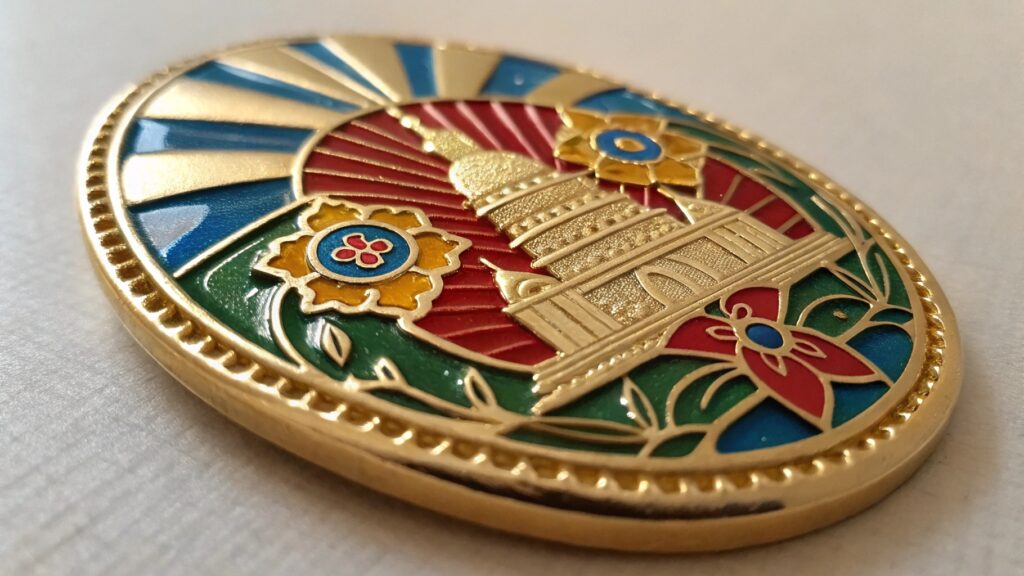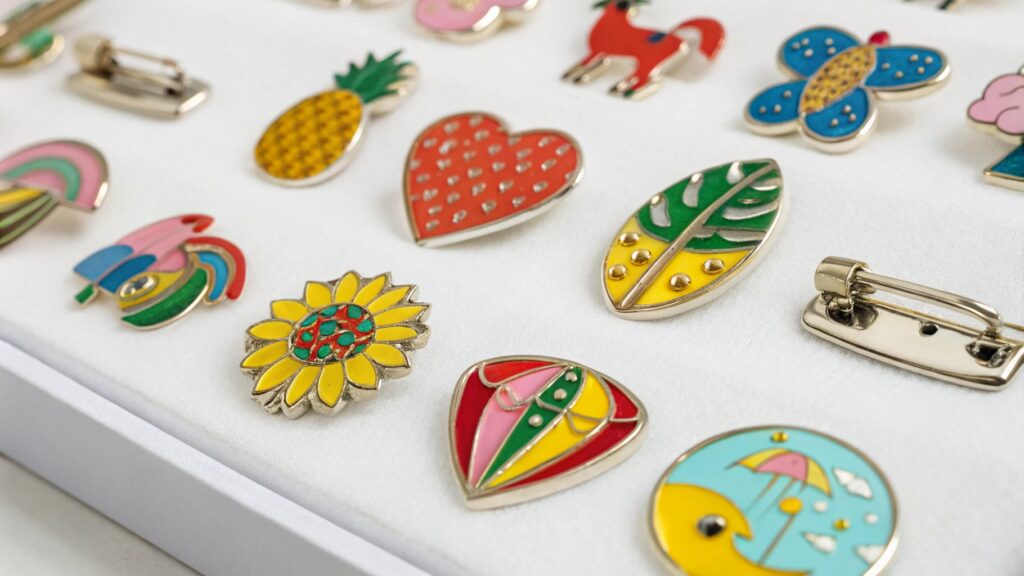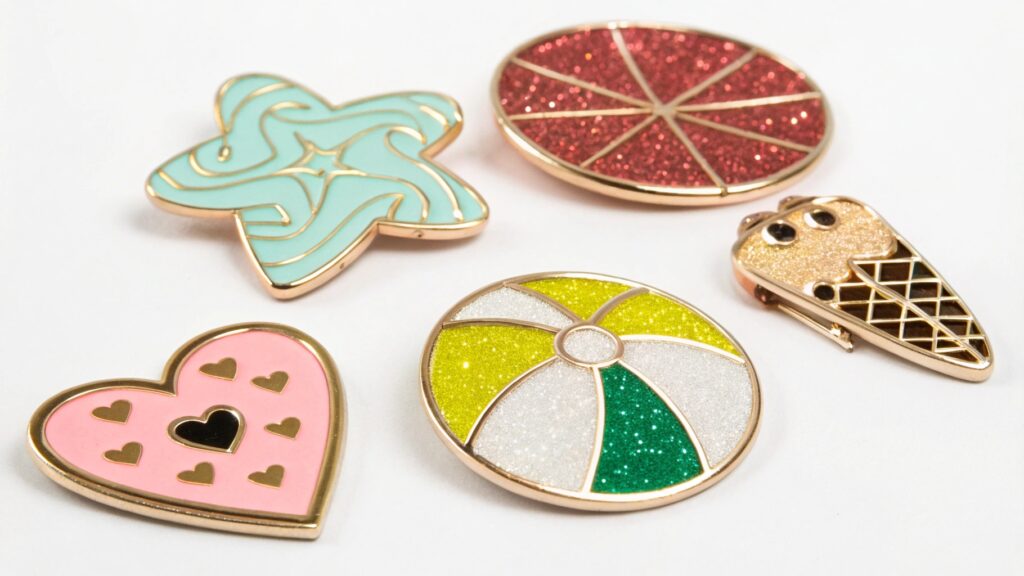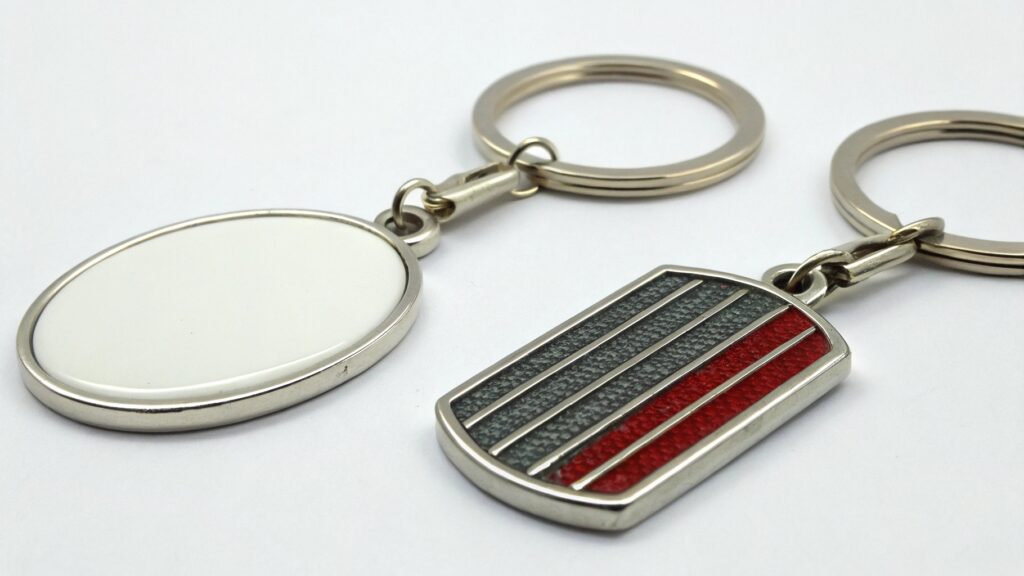Is a Custom Enamel Badge Just a Simple Pin?
You might see custom enamel badges and think they are just small decorations. But are these little pins truly simple, or do they hold a deeper meaning for brands and personal expression?
A custom enamel badge is far more than a simple pin; it is a miniature work of art and a powerful branding tool that reflects intent, storytelling, and craftsmanship, allowing for unique expression and creating a lasting impression through its design and finish.

When it comes to enamel pins, I have learned that the difference between hard and soft enamel goes far beyond just how they feel. It shows what they are meant for, the story they tell, and the skill used to make them. The main difference is in how they look and feel. Soft enamel pins have enamel that sits lower than the raised metal lines. This makes them feel textured and gives them depth. Hard enamel pins, on the other hand, are polished flat. The enamel is put on in layers and then sanded down until it is even with the metal. This makes a smooth, glass-like surface.
Why Are Enamel Pins So Expensive?
You love the look of enamel pins, but when you check the prices, you might be surprised. Why do these small, seemingly simple items often carry a higher cost?
Enamel pins can be expensive due to the intricate multi-step manufacturing process involving molding, plating, color filling by hand, baking, and polishing, coupled with design complexity, the type of enamel used (hard or soft), and the order quantity, all contributing to the final cost.

I often get asked why enamel pins1 can be quite expensive. It is a good question, especially when they look small. But there is a lot that goes into making them, and understanding that helps explain the cost.
The Craftsmanship Behind Enamel Pin Costs
Making an enamel pin is not a quick or simple process. It involves many steps, much of which is done by hand. First, a mold needs to be created from your design. This is a precise process. Then, the metal is stamped to create the pin's shape and raised lines. This stamping process is quite detailed. After that, the pin is plated with different metals like gold, silver, or black nickel. This adds to the look and cost.
The most labor-intensive part is the color filling. Each color section of the pin is filled by hand with liquid enamel. For soft enamel, the color sits in recessed areas. For hard enamel, multiple layers are applied and polished. After each color is filled, the pin needs to be baked at high temperatures to set the enamel. This baking process can happen several times for hard enamel2 to build up the layers. Finally, the pins are polished to achieve their desired finish, and attachments like pin backs are added. All these steps, especially the hand-filling and polishing, take time and skill.
| Cost Factor | Impact on Price | Example |
|---|---|---|
| Design Complexity | More colors, intricate details, cutouts = Higher cost | Simple 1-color logo vs. detailed multi-color illustration |
| Enamel Type | Hard enamel generally more expensive than soft enamel | Smooth, polished hard enamel vs. textured soft enamel |
| Quantity Ordered | Lower quantity = Higher unit price due to setup costs | 100 pins vs. 1000 pins (unit cost drops significantly) |
| Metal Plating | Special plating (e.g., black nickel, rainbow) adds cost | Standard gold/silver vs. custom antique plating |
| Pin Size | Larger pins use more material and enamel | Small 0.75-inch pin vs. large 2-inch pin |
| Additional Features | Glitter, glow-in-the-dark, backstamps, extra clutches | Adds to material and labor cost |
The type of enamel used also affects the price. Hard enamel pins require more labor and more steps to achieve their smooth, polished finish, making them generally more expensive than soft enamel pins. The quantity of pins ordered also plays a big role. There are high setup costs involved in creating molds and preparing for production. These costs are spread out over the number of pins. So, ordering a larger quantity significantly reduces the cost per pin. All these factors combine to make enamel pins a product of detailed craftsmanship, justifying their price.
What Are the Different Types of Enamel Pins?
You might know enamel pins, but did you know there are distinct types, each with its own look and feel? What are these different kinds of enamel pins, and what makes each one unique?
The primary types of enamel pins are soft enamel and hard enamel, distinguished by their finish and production process, with other variations including glitter enamel, glow-in-the-dark, screen-printed, and epoxy-coated pins that offer diverse aesthetic and tactile qualities.

When I talk about enamel pins, I always explain that there is more than one kind. Each type has its own special look and feel. Knowing the differences helps you pick the perfect pin for your needs.
Exploring the Variety of Enamel Pin Finishes
The two main types of enamel pins are soft enamel and hard enamel. The core distinction lies in both the finish and the feel. Soft enamel pins have recessed enamel. This means the colored enamel sits lower than the raised metal lines that outline the design. This gives the pin a tactile, dimensional surface that you can feel with your finger. It creates a noticeable "pop" to the design, where the metal lines stand out.
Hard enamel pins, on the other hand, are polished flat. The enamel is layered multiple times and then sanded down until it is flush with the metal lines. This results in a smooth, glass-like finish across the entire surface of the pin. Hard enamel pins have a more refined and often more durable feel. Besides these two main types, there are other variations. Glitter enamel pins have glitter mixed into the enamel colors. Glow-in-the-dark pins use special enamel that glows after being exposed to light. Screen-printed pins have details printed directly onto the enamel surface, allowing for very fine lines or gradients that are hard to achieve with just enamel fills. Some pins also have a clear epoxy coating over the enamel, which gives them a smooth, glossy finish and adds an extra layer of protection.
| Enamel Pin Type | Key Characteristic | Best For | Texture/Finish |
|---|---|---|---|
| Soft Enamel | Recessed enamel, raised metal lines | Playful designs, tactile feel, bold lines | Textured, dimensional, metal lines are prominent |
| Hard Enamel | Polished flat surface, flush metal lines | Prestige, precision, durability, sleek look | Smooth, glass-like, uniform feel |
| Glitter Enamel | Glitter mixed into enamel colors | Adding sparkle and vibrancy | Varies, but adds visual texture from glitter |
| Glow-in-the-Dark | Enamel that absorbs light and glows | Fun, novelty, special effects | Standard enamel feel, with glow properties |
| Screen Printed | Fine details printed on top of enamel | Complex details, gradients, photographic elements | Smooth or slightly raised print on top |
| Epoxy Coated | Clear dome of epoxy over enamel | Added shine, protection, smooth finish | Very smooth, glossy, durable |
Choosing between hard and soft enamel3 is not just a design decision. It is a branding strategy. Soft enamel often suggests playfulness, nostalgia, and texture. This is ideal for indie artists, pop culture themes, or collectors who like the physical feel of the pin. Hard enamel hints at precision, prestige, and lasting quality. It is often preferred by luxury brands, corporate items, or for simple, clean looks. The type you choose tells part of your story.
What is the Difference Between Hard Enamel and Soft Enamel Keychains?
You are looking at keychains and see options for hard enamel and soft enamel. They look similar, but what truly sets them apart, and why does this difference matter for your custom keychain?
The difference between hard enamel and soft enamel keychains lies in their finish and feel: hard enamel keychains have a smooth, flat, polished surface where the enamel is flush with the metal, while soft enamel keychains feature recessed enamel that sits below raised metal lines, giving them a textured and dimensional feel.

When I discuss custom keychains with clients, the choice between hard and soft enamel often comes up. While both methods create beautiful keychains, their differences are more than just cosmetic. They impact the durability and the message your keychain sends.
Key Differences: Hard Enamel vs. Soft Enamel Keychains
The main difference between hard enamel and soft enamel keychains comes down to how the enamel is applied and finished. For soft enamel keychains, the colored enamel is filled into recessed areas that are lower than the raised metal outlines of the design. When the enamel dries, it stays in these lower areas, creating a textured surface. You can actually feel the raised metal lines when you touch the keychain. This gives soft enamel keychains a dimensional, tactile quality. They often have a more classic, "coin-like" feel.
For hard enamel keychains, the process is more intensive. The enamel is filled into the recessed areas, but then it is layered multiple times until it is slightly above the metal lines. Each layer is baked, and then the entire surface is polished down until the enamel is completely flush with the metal lines. This results in a perfectly smooth, flat, and glass-like surface. The metal lines are still visible, but they do not stand out in relief when you run your finger over the surface.
| Feature | Hard Enamel Keychains | Soft Enamel Keychains |
|---|---|---|
| Surface Feel | Smooth, flat, glass-like | Textured, raised metal lines |
| Enamel Level | Flush with metal lines | Recessed (lower than metal lines) |
| Durability | More durable, scratch-resistant | Slightly less durable, can scratch more easily |
| Appearance | Polished, sleek, refined | Dimensional, tactile, bold lines |
| Production Time | Longer due to multiple layers & polishing | Shorter, simpler filling process |
| Cost | Generally higher | Generally lower |
From a production standpoint, hard enamel is more durable and scratch-resistant. However, it is also more time-consuming to produce because of the multiple layers and polishing steps. This trade-off between speed and sophistication is something creators and businesses must think about carefully, especially when making many items. Soft enamel often makes you think of playfulness, nostalgia, and texture. It is good for independent artists, pop culture items, or people who like the physical "pop" of the pin or keychain. Hard enamel suggests precision, prestige, and lasting quality. It is often preferred by luxury brands, corporate items, or for simple, clean looks. So, next time you compare hard and soft enamel keychains, do not just think about the surface. Think about the story you are telling, and how the finish becomes part of your visual message.
Conclusion
Custom enamel badges are powerful storytellers. Choose hard or soft enamel based on your brand's message and desired feel.
-
Explore the intricate craftsmanship and factors that contribute to the cost of enamel pins, enhancing your understanding of their value. ↩
-
Learn about hard enamel's unique qualities and production process, which can help you choose the right type for your needs. ↩
-
Discover the distinct features of soft enamel pins, including their tactile feel and design advantages, to make informed choices. ↩





